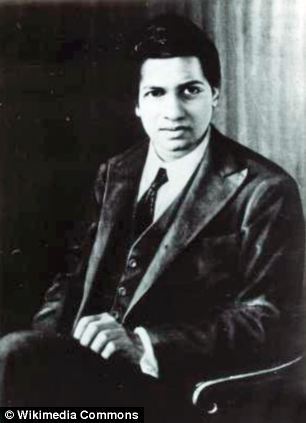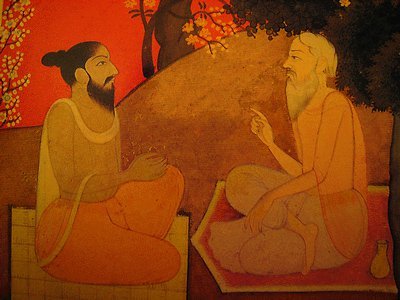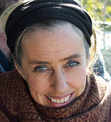Georgi Y. Johnson's Blog: I AM HERE - Opening the Windows of Life & Beauty, page 29
July 4, 2016
Go Softly. Georgi Y. Johnson
GO SOFTLY
Go softly
that life will spare its force
and if hard rain drops
from loud, ancestral skies,
be empty,
that the great earth
may drink the storm.
For rivers and oceans
of living promise
fulfil each sacred drop
and as we fall,
true love of life,
we rise.
The Science & Spirituality of Srinivasa Ramanujan
What is the source of scientific inspiration? Are we the mental recipients of a reality out there, which is communicated to us through the unfolding of consciousness, whether in the form of deep intuition or divine inspiration? Does discovery arise out of knowledge, or does the unknown define the nature of discovery? Is the brain a receiver, or a channel of truths arising out of a dimension beyond the physical? How does the individual brain interpret and represent new information from beyond the frontiers of the known?
On 16 January 1913, Srinivasa Ramanujan, an unknown Indian petty clerk from Madras, sent nine pages of mathematics to the esteemed mathematician of Trinity College, Cambridge, Prof. G.H. Hardy. Previous attempts to share his work with British academics had failed. M. J. M. Hill of University College London had seen some talent, but commented that Ramanujan’s papers were riddled with holes. H. F. Baker and E. W. Hobson, returned Ramanujan’s papers without comment. Even the esteemed mathematician G.H. Hardy of Cambridge first suspected that these nine pages of notation could be a fraud.
Yet, perusing the document, Hardy became intrigued. He recognised some of the Indian’s formulae, but others “seemed scarcely possible to believe”. Some of the formulas were already known, but after seeing Ramanujan’s theorems on continued fractions on the last page of the manuscripts, Hardy commented that he “had never seen anything in the least like them before”. He conjectured that Ramanujan’s theorems “must be true, because, if they were not true, no one would have the imagination to invent them”.What ensued was the discovery of one of the greatest mathematicians, and some of the highest impact pure mathematics of the last century. The collaboration that followed between Hardy, Littlewood and Ramanujan would continue until Ramanujan’s premature death at age 32.
Srinivasa Ramanujan
While the beauty of the story has long impacted all students of mathematics, the nature of Ramanujan’s mathematical genius, and how he himself perceived it, tends to be less explored. Hardy called it some kind of deep ‘intuition’, but Ramanujan openly stated that he received the mathematical inspiration and sometimes whole formulas, through contacting the Hindu Goddess Namagiri while dreaming. Ramanujan was an observant Hindu, adept at dream interpretation and astrology. Growing up, he learned to worship Namagiri, the Hindu Goddess of creativity. He often understood mathematics and spirituality as one. He felt, for example, that zero represented Absolute Reality, and that infinity represented the many manifestations of that Reality.
“An equation for me has no meaning unless it expresses a thought of God.”
Ramanujan grew up as a traditional Brahmin with his forehead shaved and wearing a topknot. He quoted the Vedas, interpreted dreams and was regarded by his friends to be a mystic. Throughout his life, Ramanujan worshiped at the Sarangapani Vishnu temple in Kumbakonam. On the day that he received the letter of invitation to Cambridge from Hardy, his compliance was not immediate. Leaving India would mean the loss of his Brahmin status. He would first have to seek the blessing of the Goddess Namagiri. Meeting non-compliance, the professors in Cambridge were perturbed and frustrated.
Three months later, the Goddess appeared. Some stories say it was in the dream of Ramanujan’s mother. Others say that Ramanujan himself had the dream. But either way, the young Indian agreed to set sail to England, with suitcase full of notebooks of mathematical formulas he had been compiling since age 14, through years of expulsion from college, marriage to his 9-year old bride, poverty, illness and his work as a clerk
Arriving in 1914 on the eve of World War I, Ramanujan experienced severe culture shock in England. As a vegetarian, he had to cook for himself and he insisted on going bare foot when he could. Hardy and Littlewood both acted as his mentors, but increasingly they became his translators: from the world of mystical India to the world of proofs, presentation and academic diplomacy. For them, Ramanujan was in himself a lifetime mathematical discovery.
Ramanujan claimed to dream of blood drops, after which, he would receive visions of scrolls of complex mathematical content unfolding before his eyes. “While asleep, I had an unusual experience. There was a red screen formed by flowing blood, as it were. I was observing it. Suddenly a hand began to write on the screen. I became all attention. That hand wrote a number of elliptic integrals. They stuck to my mind. As soon as I woke up, I committed them to writing.”
 Ramanujan was the first Indian professor to become a Fellow at Cambridge University. Hardy said: “He combined a power of generalization, a feeling for form, and a capacity for rapid modification of his hypotheses, that were often really startling, and made him, in his own peculiar field, without a rival in his day. The limitations of his knowledge were as startling as its profundity. Here was a man who could work out modular equations and theorems… to orders unheard of, whose mastery of continued fractions was… beyond that of any mathematician in the world, who had found for himself the functional equation of the zeta function and the dominant terms of many of the most famous problems in the analytic theory of numbers; and yet he had never heard of a doubly periodic function or of Cauchy’s theorem, and had indeed but the vaguest idea of what a function of a complex variable was…”
Ramanujan was the first Indian professor to become a Fellow at Cambridge University. Hardy said: “He combined a power of generalization, a feeling for form, and a capacity for rapid modification of his hypotheses, that were often really startling, and made him, in his own peculiar field, without a rival in his day. The limitations of his knowledge were as startling as its profundity. Here was a man who could work out modular equations and theorems… to orders unheard of, whose mastery of continued fractions was… beyond that of any mathematician in the world, who had found for himself the functional equation of the zeta function and the dominant terms of many of the most famous problems in the analytic theory of numbers; and yet he had never heard of a doubly periodic function or of Cauchy’s theorem, and had indeed but the vaguest idea of what a function of a complex variable was…”
As for his place in the world of Mathematics, Paul Erdős of Israel’s Technion passed on Hardy’s personal ratings of mathematicians. Suppose that we rate mathematicians on the basis of pure talent on a scale from 0 to 100, Hardy gave himself a score of 25, J.E. Littlewood 30, David Hilbert 80 and Ramanujan 100.
When he returned to India, Ramanujan was again gravely ill. From his death bed, he continued to write notes from revelations in dreams, which he believed were gifts from the Hindu goddess. In a last letter to Hardy, Ramanujan shared his latest insights. The letter described several new functions that behaved differently from known theta functions, or modular forms, and yet closely mimicked them. Ramanujan conjectured that his ‘mock’ modular forms corresponded to the ordinary modular forms earlier identified by Carl Jacobi, and that both would wind up with similar outputs for roots of 1.
No one at the time understood what Ramanujan was talking about. “It wasn’t until 2002, through the work of Sander Zwegers, that we had a description of the functions that Ramanujan was writing about in 1920,” said Emory mathematician Ken Ono.
Building on that description, Ono and his colleagues went a step further. They drew on modern mathematical tools that had not been developed before Ramanujan’s death to prove that a mock modular form could be computed just as Ramanujan predicted. They found that while the outputs of a mock modular form shoot off into enormous numbers, the corresponding ordinary modular form expands at close to the same rate. So when you add up the two outputs or, in some cases, subtract them from one another, the result is a relatively small number, such as four, in the simplest case.
 “We proved that Ramanujan was right,” Ono says. “We found the formula explaining one of the visions that he believed came from his goddess… No one was talking about black holes back in the 1920s when Ramanujan first came up with mock modular forms, and yet, his work may unlock secrets about them.”
“We proved that Ramanujan was right,” Ono says. “We found the formula explaining one of the visions that he believed came from his goddess… No one was talking about black holes back in the 1920s when Ramanujan first came up with mock modular forms, and yet, his work may unlock secrets about them.”
“It’s fascinating to me to explore his writings and imagine how his brain may have worked. It’s like being a mathematical anthropologist,” said Ono.
Can Ramanujan’s mathematical magic be reduced, as world academia has claimed, to a ‘deep intuition’? What is intuition anyway? Could it be that the brain is an organ of consciousness and that when it’s trained to surrender, or to open in scientific “prayer”, it’s able to reflect intelligence from sources way beyond itself? Where do scientists go when they look for a flash of inspiration? To the past? To the known? Or to the great unknown, over the edges of the borders of their own conceptual frameworks?
Today, the legendary story of Ramanujan is being told through the big screen in the new film: The Man Who Knew Infinity. Facebook founder Mark Zuckerberg recently named Ramanujan as one of his favourite scientists. He points out that all that genius – an intelligence that transformed mathematics and physics – could have been lost, had Hardy not responded in those early pre-war years. What would have happened if Ramanujan had access to the internet? He asks. How many more Ramanujans are out there?
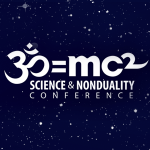
This article first appeared on Science and Nonduality (SAND)
Spiritual Awakening and Identity Fluidity
Awakening involves the breakdown of a structure of identity. In this, part of the fallacy of identification is realized, as the light at source of all identity shines through the breakage. Yet, just as the body continues to move through its seasons and the electricity bill still needs to be paid, so does the process of identification continue.
Awakening doesn’t mean freedom from identification, any more than it means the instant evaporation of the physical body. After awakening, identification simply has the possibility to become more fluid, less grasping, less likely to get caught in ideas, wants, needs, pretence and “self”-defence. Identification happens in each moment of perception. When a teacher and student look at each other with innocence, the teacher becomes the student and the student becomes the teacher. If instead, teachers look at their reflection in the eyes of the student, or vice-versa, they get stuck in a form of narcissism.
If identity is fluid, when we look at a flower, we become the flower, in all its bristling, perfect imperfection. There is nothing between us and the flower. We don’t stay the “human” looking at the “flower”. The flower absorbs our consciousness and the “I” is revealed as inseparable from the “I” of the flower. This is what we could call natural identification: we don’t get stuck in it. Fluidity comes with the ease to move outward towards all things, and back to the transient identity of a separate form in a separate body. “It’s totally OK to pick things up and experience them,” says spiritual teacher Russel Williams. “But you also need to be able to put them down again, in their place.”
Problems with identity and identification occur when fluidity is lost, when we get attached to a form of identity that becomes fixed and recreated by the imagination in order to satisfy some personal agenda, such as a need for safety; a desire to escape pain or responsibility; a fear of rejection; or an ambition to become superior to the whole. Often, these causes of attachment are rooted in unconscious forms of trauma: an unbearable sense of division from the whole.
“It is not enough to wash a veneer of ‘Oh well, everything is equally an expression of Awareness and therefore nothing matters’ over our beliefs and feelings,” writes Rupert Spira. “This kind of superficial thinking is one of the safer refuges for the apparently separate self in those that have added a veneer of spirituality to their persona.”
“After a spiritual experience,” says Unmani, “there can be a reflex to stamp a label on it as something which is known. And then there can be a sense of contraction, that is felt almost painful, physically. We don’t always acknowledge this contraction because we’ve spent most of our lives living in this contraction, where we believe we know who ‘I am’, when without this contraction, I don’t really know who I am.”
Spiritual Psychology
The spiritual teacher and psychologist John Welwood has named this illusion the “spiritual bypass”: “I think there is basically one wound,” he told Tami Simon of Sounds True, “…that is the wound around love and being disconnected from love, and that is the ultimate wound.”
“I’ve seen a lot of people using spiritual bypass to get away from themselves,” says Dr. Gabor Mate. “so that the so-called spiritual seeking itself, or the seeking of transcendental experience, and the self definition as a spiritual seeker, can be a way of avoiding contact with their truer selves, even though it’s being done in the name of contact with their truer selves.” This psycho-spiritual formula of the “seeker”, could be equally applied to the psychology of the “finder”.
As part of the human family in its current state, we are all, to some degree, formed by and living out the trauma of disconnection and a resulting addiction to the belief in a separate self. This plays in our process of self-realization long after an awakening experience, irrespective of whether we are student or teacher; speaker or listener, writer or reader.
At source and from a deeper level of reality, there is no student and there is no teacher. Teacher-student is a transient duality of co-dependent forms, ultimately arising to meet the needs of the whole. Identification with the form of teacher or student is part of the fluidity of identification. Yet, as with all identification, it can get complicated, or even harmful, when that fluidity is lost. Illusion is born with the fixation of life in an idea of what we believe it is “supposed” to be.
At a recent Satsang in Portugal, someone asked Mooji about the rumor that he is a living God. He artfully indicated that the belief that one is God, as well as the belief that one is separate from God, are both, in a sense, blasphemous. “You can believe you are God,” he said, “But it won’t be pleasant.”
I Am the Universe (and you’re not)
At the root of the trauma of the separate self is an apparent split in consciousness itself, between the one that sees, and the form that wants to be seen. The sensation of being seen (and affirmed in positive attributes) is critical to an infant form to remain in unity. Yet, the craving birthed from the lack of this affirmation from the outside can continue throughout physical life.
At its root, there can be an inner narcissist that demands a constant supply of affirmation in order to maintain the illusion of the superior separate self. Although Narcissistic Personality Disorder (NPD) is officially a mental disease (even winning reduced sentences for murder), every human harbors the potential for narcissistic pathology to some degree.
After awakening, (after forms of identity and personality are recognized as temporal and relative), the temptation to re-identify to the form of spiritual teacher can be strong. Yet it is a form that of itself is riddled with narcissistic temptation when deeper trauma begins to emerge. With a kind of whiplash from the separate self, the urge to identify and entangle with the new image and status of the separate, enlightened individual can be overpowering.
Narcissistic traits include: amorality (spiritually disguised as nondual wisdom – being beyond good and bad, right and wrong); exaggerated feelings of self-importance (the urgent significance of the spiritual message, and the messenger); excessive need for admiration (an insatiable hunger for more students or disciples); a lack of empathy (the claim to be free of suffering, and an implicit judgement on those who are not); grandiosity (a sense of entitlement and expectation of special treatment); exploitation of others for personal gain (the three traps of sex, money and power); jealousy of others (and a preoccupation with jealousy of others towards themselves); and difficulty to take responsibility (the whole world is an illusion).
Cult leaders typically have seven to eight pathological narcissistic traits. According to cult expert Bob Pardon: “Religion is tailor-made for their fantasies. What better manifestation than to be like God?” Yet between the purity of the Buddha and the horrors of Charles Manson, there are infinite shades of grey.
After awakening, there is a passion to bring the same liberation from false identification to others. The brave ones express that passion and begin to teach, directly out of their own experience. In this, there is a dedication of service to the needs of the whole. It can have a tremendous beauty, within a collective emergence of consciousness from beyond the restraints of form. Its power is found precisely through the sheer diversity of forms of spiritual teachings and teachers.
Yet at heart, each individual teaching is inseparable from an expanding spiritual community, a network of light beyond the control of any junction or injunction. Each perspective enriches the whole; each perspective is precious, inviolable and inseparable from the whole. Realizing this is part of the process of spiritual maturation that we are in, together.
Perhaps the same psychology is arising both in spiritual teaching and science. “Individuality is only possible if it unfolds from wholeness,” said the great physicist David Bohm. “Ego-centeredness is not individuality at all.”
“The body-mind is like a room. It is there, but I need not live in it all the time.” —Nisargadatta Maharaj

This article first appeared on Science and Nonduality (SAND)
Gender Fluidity and Freedom of Identity
Is the split of human identity into two strict categories of male and female natural? Or can these limitations be released through opening to the full spectrum of gender fluidity?
It happened at the moment the first ultrasound zoomed in on your genitalia, and if not then, then at the moment of birth, while you were busy with the shock of the first inhalation. Before you had any name, you were named by gender, with: “It’s a boy!” or “It’s a girl!” and with all its corresponding biological, psychosocial and even spiritual luggage. Before you had a name, a tribe or a country, you were labelled as either male or female. This fundamental gender identity, with its programs, limitations, expectations, conditions and restrictions, follows us from first inhalation to final exhalation.
Yet new technologies in DNA sequencing and cell biology are revealing that even biologically, the duality of gender is no longer a clear-cut case. Even beyond clear-cut anomalies, molecular research today suggests that almost everyone is, to varying degrees, a patchwork of genetically distinct cells, some with a sex that could be different from the rest of the body, according to a 2015 article in Nature. Some studies even suggest that the sex of each cell drives its behavior, through a complicated network of molecular interactions.
“I think there’s much greater diversity within male or female, and there is certainly an area of overlap where some people can’t easily define themselves within the binary structure,” John Achermann of University College told the Journal Nature.
Monotheism and Gender Plurality
It’s not only science that is collapsing binary beliefs about gender. At the heart of monotheism, the case has even been put that Judaism inherently offers a range of gender identities beyond the man and the woman.
“It’s very easy to assume that Judaism is an exclusively gender-binary religion,” writes Charlotte Elisheva Fonrobert of Stanford University. “Almost all of the common traditional laws are based on the assumed differences between males and females. We see it in assumed gender roles, in liturgy, in proscribed family responsibilities, and in both our secular and religious laws. If, however, we look just a bit deeper into our sacred texts, we see that a simple male/female binary is not only cumbersome, it’s wholly inaccurate.”
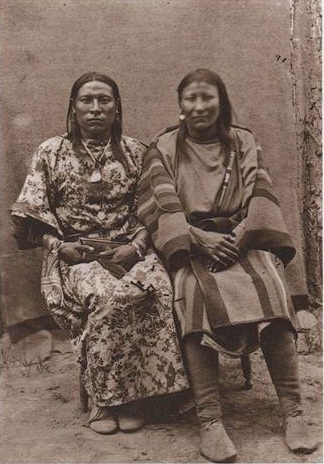
One Heart, Two Spirits, Five Genders
Historians of the oral traditions of native Americans claim that the whole concept of a binary gender system didn’t exist in native American culture, until they were exposed to the cultural agendas of Europeans. Here, there are five possible gender combinations, in which the child is given the freedom to define itself. Indian Country writes of Two Spirits, One Heart, Five Genders: Female, male, Two Spirit female, Two Spirit male and transgendered.
“In my culture, we have people who dress half-man, half-woman. Winkte, we call them in our language,” says Native rights activist and American Indian Movement co-founder Russell Means. “If you are Winkte, that is an honorable term and you are a special human being and among my nation and all Plains people, we consider you a teacher of our children and are proud of what and who you are.”
Today, Native Americans bring forward the term of “Two Spirit” as a universal term in the English language for all that falls between the strict delineation of male and female.
The Native American belief is that some people are born with the spirits of both genders and express them so perfectly. It is if they have two spirits in one body. It was also a custom for parents to not interfere with nature and so among some tribes, children wore gender-neutral clothes until they reached an age where they decided for themselves which path they would walk and the appropriate ceremonies followed. The Two Spirit people in pre-contact Native America were highly revered and families that included them were considered lucky.
Female-bodied Two Spirits were hunters, warriors, engaged in what was typically men’s work and by all accounts, were always fearless.
Traditional Native Americans closely associate Two Spirit people with having a high functioning intellect (possibly from a life of self-questioning), keen artistic skills and an exceptional capacity for compassion. Rather than being social dead-enders as within Euro-American culture today, they were allowed to fully participate within traditional tribal social structures.
Nonduality & Gender Fluidity
The first identification of self also involves the identification of “other” than self. If we are identified as female, then male is identified as “other”. In the rift between self and other, suffering arises. Nonduality is about the dissolution of this belief in ‘otherness’, and the principle of gender fluidity could open the potential for that sacred release.

This article first appeared on Science and Nonduality (SAND)
July 3, 2016
A Meeting with Elie Wiesel: Celebrating Life
“Human suffering anywhere concerns men and women everywhere.”
― Elie Wiesel, Night
Spiritual teachers come in many different forms and often they would not call themselves a spiritual teacher at all. They can be here as rock stars, outrageous comedians, factory workers and random old ladies on park benches.
Yet these awakened ones speak from a freedom of concern that is only found out of that existential core which is behind time and space, outside of the great illusion of it all, independent of change, and beyond personal survival.
They speak from this dimension where we can’t be defined as separate, with a resonance of unconditional care. They don’t abandon the kingdom of Maya, yet Maya is no longer their master. They are in the world, but not of it. They are free, and yet they live on, and just their living on is of service to the whole.
Resting now in peace, Elie Wiesel was such a teacher. Feelings of unspeakable gratitude for his life arise through each pore of self, in these days of his passing.
Melodies of a Master
“There are victories of the soul and spirit. Sometimes, even if you lose, you win. ”
― Elie Wiesel
My first impulse to visit Israel as a 19 year-old came from the gut. The incomprehensibility of the holocaust and the living scream from the gut of the social formulas of postgraduate, left-wing trendy, Thatcherite Britain was like a motor driving me towards Jerusalem. I bought an old van, put a futon in the back, and began driving, via Soviet occupied Auschwitz Birkenau, and on through Yugoslavia, Greece, Haifa to Jerusalem.
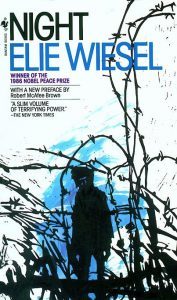 Months earlier, finding myself in the strange, celestial gardens of the holocaust museum Yad Vashem, a book came to my hands: Night, by Elie Wiesel. I locked myself up in the attic apartment near the train-lines in the Baka neighbourhood of Jerusalem, and opened the cover, opening the dimension of the holocaust, told with palpable clarity through the eyes of a 13 year old boy, naked, unembellished.
Months earlier, finding myself in the strange, celestial gardens of the holocaust museum Yad Vashem, a book came to my hands: Night, by Elie Wiesel. I locked myself up in the attic apartment near the train-lines in the Baka neighbourhood of Jerusalem, and opened the cover, opening the dimension of the holocaust, told with palpable clarity through the eyes of a 13 year old boy, naked, unembellished.
The movement through this door was like following the sense of truth opened by a knife slashing the very fabric of maya-land: the dream-like, deeply unsafe veneer of social etiquette and personal survival I had left in England. Out of personal trauma, or a heightened sense of mortality or the danger of collective man, each word of the book sounded at the core of the heart with the resonance of a sad melody repeated in the background of life-times.
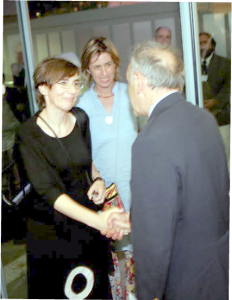 Later on, I would meet this man, Elie Wiesel. He dedicated his life to peace and to the movement beyond national identification and conflict, standing relentless for “human” irrespective of origin or creed. I met him at the Technion, where he was receiving an honorary doctorate. He spoke naturally and was utterly free of the artifice of status, personal importance, or politics. He looked us in the eyes as if we were his siblings. Piercing to the core of That which is one, behind space and time. I asked him if he had a message for Technion students (this was my task there). “Study, study, study,” he said. I looked at him, and he looked back. There was a vast and pure emptiness in meeting between us. Then he said, with a deeper voice and even greater authority: “Celebrate Life”.
Later on, I would meet this man, Elie Wiesel. He dedicated his life to peace and to the movement beyond national identification and conflict, standing relentless for “human” irrespective of origin or creed. I met him at the Technion, where he was receiving an honorary doctorate. He spoke naturally and was utterly free of the artifice of status, personal importance, or politics. He looked us in the eyes as if we were his siblings. Piercing to the core of That which is one, behind space and time. I asked him if he had a message for Technion students (this was my task there). “Study, study, study,” he said. I looked at him, and he looked back. There was a vast and pure emptiness in meeting between us. Then he said, with a deeper voice and even greater authority: “Celebrate Life”.
This message: Celebrate life, became a beacon, a flag and a guide in the years to come as I continued living here, in Israel. It is the tent-peg of our human purpose. It is the way to happiness, service and peace. I took shelter in his words.
Today, on hearing of the passing of this pure soul, I feel gratitude. Gratitude that he is finally out of here, in peace, at peace, as peace. Gratitude that he lived, and continued living, beyond all parameters of personal survival. Gratitude for his fundamental message, and a deep responsibility to carry this message forward as humanity continues to unfold its own damaged gut, through the horrors that are still appearing among us, and haunt the road ahead.
“I pray to the God within me that He will give me the strength to ask Him the right questions.”
― Elie Wiesel, Night
Biography from The Elie Wiesel Foundation for Humanity
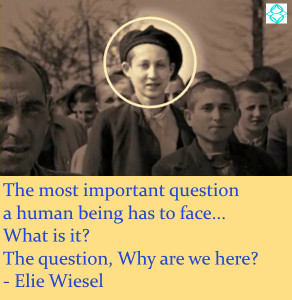 Elie Wiesel was born in 1928 in Sighet, Transylvania, which is now part of Romania. He was fifteen years old when he and his family were deported by the Nazis to Auschwitz. His mother and younger sister perished, his two older sisters survived. Elie and his father were later transported to Buchenwald, where his father died shortly before the camp was liberated in April 1945.
Elie Wiesel was born in 1928 in Sighet, Transylvania, which is now part of Romania. He was fifteen years old when he and his family were deported by the Nazis to Auschwitz. His mother and younger sister perished, his two older sisters survived. Elie and his father were later transported to Buchenwald, where his father died shortly before the camp was liberated in April 1945.
After the war, Elie Wiesel studied in Paris and later became a journalist. During an interview with the distinguished French writer, Francois Mauriac, he was persuaded to write about his experiences in the death camps. The result was his internationally acclaimed memoir, Night (La Nuit), which has since been translated into more than thirty languages.
In 1978, President Jimmy Carter appointed Elie Wiesel as Chairman of the President’s Commission on the Holocaust. In 1980, he became the Founding Chairman of the United States Holocaust Memorial Council. He is President of The Elie Wiesel Foundation for Humanity, an organization he and his wife created to fight indifference, intolerance and injustice. Elie Wiesel has received more than 100 honorary degrees from institutions of higher learning.
A devoted supporter of Israel, Elie Wiesel has also defended the cause of Soviet Jews, Nicaragua’s Miskito Indians, Argentina’s Desaparecidos, Cambodian refugees, the Kurds, victims of famine and genocide in Africa, of apartheid in South Africa, and victims of war in the former Yugoslavia. For more than fifteen years, Elie and his wife Marion have been especially devoted to the cause of Ethiopian-born Israeli youth through the Foundation’s Beit Tzipora Centers for Study and Enrichment.
Teaching has always been central to Elie Wiesel’s work. Since 1976, he has been the Andrew W. Mellon Professor in the Humanities at Boston University, where he also holds the title of University Professor. He is a member of the Faculty in the Department of Religion as well as the Department of Philosophy. Previously, he served as Distinguished Professor of Judaic Studies at the City University of New York (1972-76) and the first Henry Luce Visiting Scholar in Humanities and Social Thought at Yale University (1982-83).
Elie Wiesel is the author of more than sixty books of fiction and non-fiction, including A Beggar in Jerusalem (Prix Médicis winner), The Testament (Prix Livre Inter winner), The Fifth Son (winner of the Grand Prize in Literature from the City of Paris), two volumes of his memoirs, All Rivers Run to the Sea and And the Sea is Never Full, and most recently The Sonderberg Case.
For his literary and human rights activities, he has received numerous awards including the Presidential Medal of Freedom, the U.S. Congressional Gold Medal, the National Humanities Medal, the Medal of Liberty, and the rank of Grand-Croix in the French Legion of Honor. In 1986, Elie Wiesel won the Nobel Prize for Peace, and soon after, Marion and Elie Wiesel established The Elie Wiesel Foundation for Humanity.
July 2, 2016
Looking for Home. A nondual poem from Georgi Y. Johnson
I looked for home in the valleys
but they were wiser than me.
So I looked for home
through distant shores
but the search
chased me faster
from sky-stabbing mountain
to death’s ravine,
and its intoxicating
eternal lack.
So I looked for home
in most loyal liturgy,
until, (volumes later),
the last word
betrayed the letter.
I looked for home
in the children,
only to find them
looking for home in me.
So I looked for home in the heart,
but the heart shattered
again and again
into a new kind of chaos
of fright and shards
of light.
So I knelt by a river
of heaven-touched losers
and looked for home in the water,
and home flowed on and on
yet never moved
at all.
May 26, 2016
I am the universe. How could it be (M)other?
As a child, I would look up, into that sky. Infinite and dark, with distant stars, unending space hardly affected by cloud. I would look up and recognize the boundless, darkness of sky. There was a distinct atmosphere to it – the looking up. A felt sense of home, recognition, but also a kind of subtle longing – a sadness.
We lower our eyes and pick up our lives under these endless skies. We cease to question. Perhaps we even stop taking a few moments to feel that atmosphere – the atmosphere of the universe directly above our heads, below our feet, in our lungs, in each waking and sleeping moment. Somewhere, somehow, we learn to believe that we are separate. What’s in here, and down here, is separate from what’s out there, and up there. The universe is everywhere around, but not in me. I am critically alone. How could such a bizarre conclusion have been formed?
Only yesterday, I felt myself collapsing at night time into that holy, vast, sentient energy of the universe that I recognize from the child’s heart on guy fawks night – when we were supposed to be looking at the wondrous display of fireworks and sparkling cartwheels, and when what was actually mysteriously opening was the infinite, unchanging infinity of night beyond. I fell into that energy, dissolving by degrees, and suddenly became conscious that I considered myself separate. “It” was some kind of trip, an experience, even a stranger. “I” was the one alone, climbing through the stages of life in chains of ambition, regret and apology.
Then, the two became one. The universe outside – that sentient energy of universal home – appeared inside, deep inside the womb. Never separate. How did I ever believe that any particle of ‘me’ could be separate from that?
A Psycho-spiritual story

“Music in the soul can be heard by the universe.” Lao Tzu
Today, I pondered, how the child’s heart could become so clouded by a belief in being universally ‘sent to Coventry’ – excluded from the great ‘external’ panorama of creation – in all its intimacy, mystery, familiarity, exquisite peace and sense of home. Feeling through it, there came a layer of another kind of home. The psychological home, where the child is in unity with the felt sense of the mother. This unity is critical to survival. Her rhythms, moods, expansions and retractions in energy and feeling literally form the atmospheric back-drop of what it means to be here, in this life, as a human (and survive it).
The terrible choice of the child is often between abandonment and abandonment. To stay with eyes fixed on the infinity of night sky, is to turn from the mother of this incarnation. To stay with heart fixed in the energy of the mother of this incarnation, is to disinherit oneself from the universe. It comes into our primitive mental forms as a binary equation – either-or – with a kind of separation as a consequence of both.
Now, when I see that wonder in my children’s eyes, I strive to wonder outwardly together with them. Our togetherness, and all the felt presence of the family energy can be surrendered into the greater the whole.
Who could every believe it to be ‘other’?
One. An introduction to Nondual Therapy
“If only a world-wide consciousness could arise that all division and fission are due to the splitting of opposites in the psyche, then we should know where to begin.”
C.G. Jung, The Essential Jung: Selected Writings
August 19th-21st, 2016, Haren Netherlands
 ONE: an introduction to Nondual Therapy.
ONE: an introduction to Nondual Therapy.
Moving deeply into the felt sense of energetic contractions and consolidating in the non-dual positions through which therapy and healing can occur.
Facilitators: Georgi Y. Johnson & Bart ten Berge
Venue: De Biotoop, Haren, Netherlands
Time: 10:00-18:00 each day.
Cost: 350 euros
The workshop covers:
The split between self and other and the emotional dualities
Opening and realization of nondual positions
Energy work and healing out of nondual positions
More info and registration: bart@inner-growth.org
A vegetarian lunch and refreshments are served on all three days.
Stillness of the Wind – Meditation Intensive with Bart & Georgi, Haren
Satsang & meditation intensive consolidating freedom of waking consciousness from the perspective of stillness, peace and silence.
 In English.
In English.
Facilitators: Bart ten Berge, Georgi Y. Johnson
Venue: ISSP, De Biotoop, Haren, Netherlands
Cost: 250 Euros
Consolidation in That continuity of existence, working with:
Inner surrender
Effects on form, beyond grasping and aversion
Allowing free-fall into Unknowing
For more details and registration: bart@inner-growth.org
Lunch and refreshments are included in the day’s hospitality.
Allowing the Beloved – Israel with Bart & Georgi – June 2-4th 2016
“God turns you from one feeling to another and teaches you by means of opposites, so that you will have two wings to fly – not one.”
~Rumi
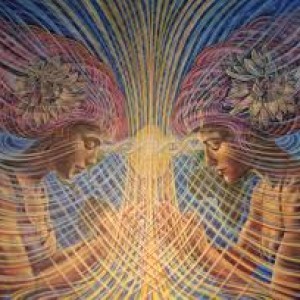 3 Days of Inspiration and Nonduality moving through the and beyond the polarity of male and female with Bart ten Berge and Georgi Y. Johnson.
3 Days of Inspiration and Nonduality moving through the and beyond the polarity of male and female with Bart ten Berge and Georgi Y. Johnson.
Sampling the ingenuity of That which is the source of consciousness and of all experience.
Opening the doors of the heart.
Allowing the surrender of mind to the heart and of consciousness to loving awareness.
Moving into the realization of unity through release into the one field of pure awareness.
Herzl 26, Zichron Yakov, Israel
Details: SMS 052 4297196
info@iamhere.life
Cost for three days: 1350 NIS.
A vegetarian lunch is served, as well as refreshments throughout the day.
I AM HERE - Opening the Windows of Life & Beauty
- Georgi Y. Johnson's profile
- 30 followers


